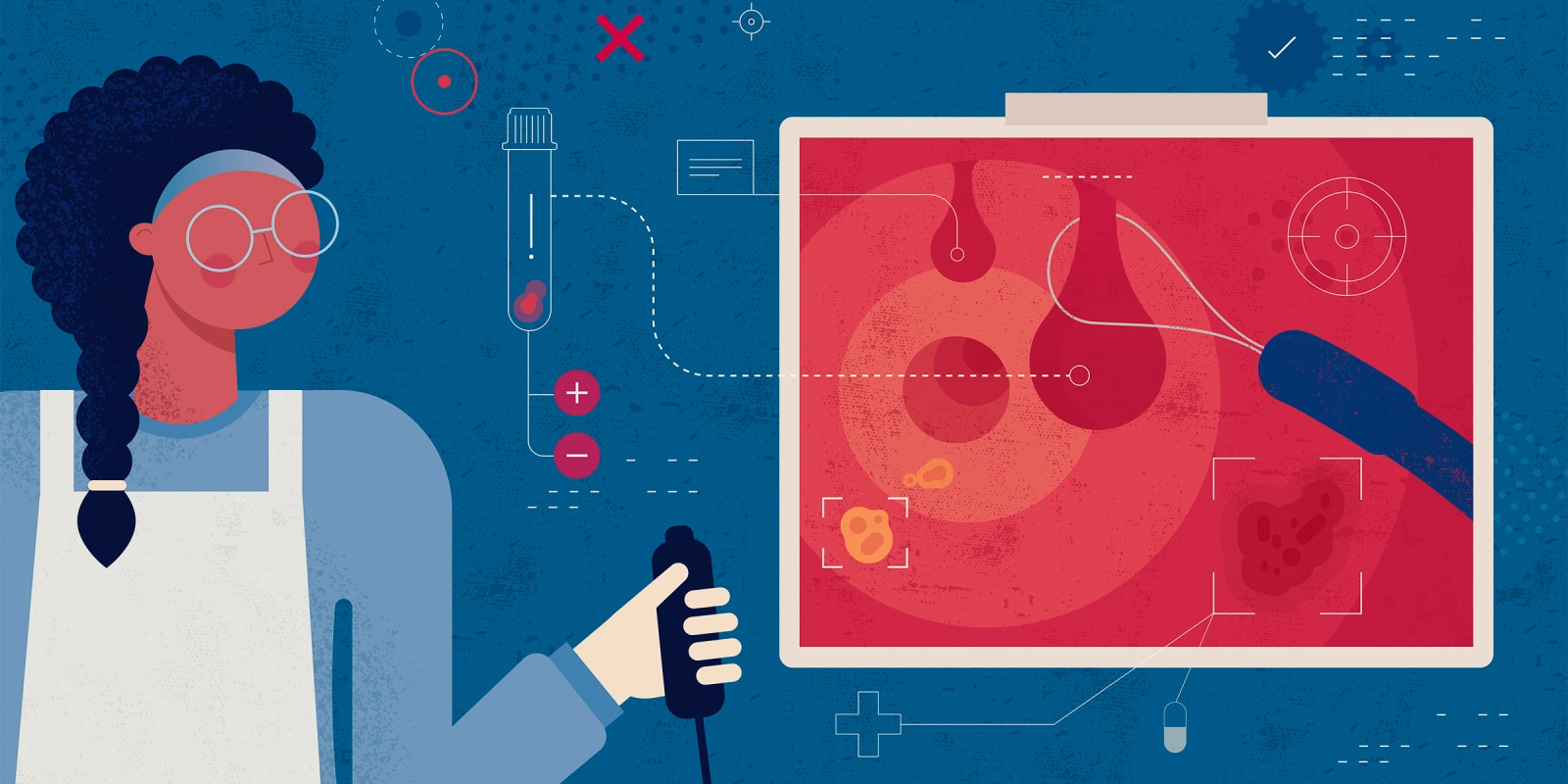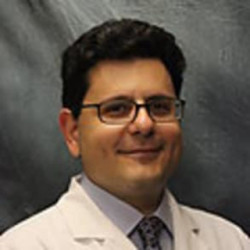In our brief reportage from Digestive Disease Week (DDW) 2024, the preeminent U.S. annual Digestive Disease meeting, we focus on presentations raising interesting controversies in current endoscopic practice in the areas of Endoscopic Mucosal Resection (EMR) for colon polyps and Per Oral Endoscopic Myotomy (POEM) for achalasia.
A multi-center study that received the distinction of being presented at the ASGE plenary session by Dr. Heiko Pohl randomized patients with large colon polyps to “hot” versus “cold” snare EMR (i.e., cutting with electrosurgical energy versus cutting by mechanical snare closure alone). Prior high-quality randomized studies of cold EMR for smaller polyps revealed higher safety (less perforation/ delayed bleeding) but also higher incomplete resection compared to hot EMR. The study by Pohl confirmed these findings in larger polyps (≥20 mm) in 660 randomized patients from 10 North American centers. In the per-protocol analysis, there were significantly fewer Severe Adverse Events (SAEs) in the cold EMR group (1.4% versus 4.9%, p=0.017), including less delayed bleeding (1.1% versus 2.5%, NS) and fewer perforations (0% versus 1.8%, NS) and, in the 518 (78%) that received their six-month 1st post-resection surveillance colonoscopy (SC1), there was much higher polyp recurrence in the cold snare group (29% vs 12%). The 12% recurrence in the hot-snare group is of particular interest as this group had thermal ablation of the EMR margin with the STSC (snare tip soft coagulation) technique purported to dramatically decrease post-EMR polyp recurrence. It was initially proposed by the Australian Westmead group, and it has generated significant interest and debate. The initial randomized Australian study reported an SC1 recurrence in the hot EMR+STSC arm of only 5.2% (compared to the control group and historical rates of 20-25%).
At this year’s DDW, the Australian group presented in the same session as the study by Pohl, a randomized study that also investigated hot vs cold EMR for larger polyps. As expected, it also showed less delayed bleeding (1.1% versus 7.8%), fewer perforations (0% versus 1.1), and a much higher polyp recurrence (21% versus 1.4%) in the cold group. What is astonishing, however, is the per-protocol SC1 recurrence in the hot group of only 1.4% (attributed to the STSC margin ablation strongly advocated by this group). This is far lower than even their prior randomized study, which, as mentioned above, showed 5.2% SC1 recurrence. One might attribute the lower recurrence to the fact that this study was on polyps ≥15 mm (compared to ≥20 mm in 2019). However, the median polyp size was 30 mm in both studies. Following on the same theme, the Australian group also reported on the same DDW 2024 session a retrospective study assessing “long-term” recurrence after STSC margin ablation at SC2 (surveillance colonoscopy performed at 18 months) in patients without recurrence at SC1 (six months). Incredibly, the SC2 recurrence rate was a mere 0.2%. This is despite their prior randomized study demonstrating cumulative recurrence of 5.2% at SC1 and 7.4% at SC2. The hot EMR (with STSC ablation) recurrence rate of 12% at SC1 in the North American study by Pohl at DDW 2024 is hard to reconcile with the 1.4% SC1 recurrence in the Australian DDW 2024 study esp. since both were high quality, prospective, randomized studies by expert operators. The North American data by Pohl do not appear to represent an aberration since another North American prospective randomized study of EMR with and without STSC margin ablation from the Mayo Clinic system also reported SC1 (six-month) recurrence of 12%. These findings raise questions about the reproducibility of the STSC technique and require further investigation. Alas, the debate will persist for now.
Another DDW 2024 presentation that contradicts conventional wisdom and, as such, generated considerable debate was that of our study entitled: Peroral Endoscopic Myotomy (POEM) in type III achalasia, is a long myotomy necessary? Conventional wisdom as distilled in recent guidelines based on limited-quality, mostly retrospective, data and expert opinion, considers a longer esophageal myotomy necessary in type III achalasia to treat the spasm in the more proximal esophageal body characteristic of these patients. As a corollary to this, for type III patients, the guidelines consider POEM superior to other treatments (such as Heller) because it permits a longer myotomy. Our study cast doubt on this established paradigm. Guided by concerns regarding the risk/benefit of long esophageal myotomies, we progressively shortened the POEM myotomy length in type III patients over the 12-year study period while monitoring outcomes to ensure that efficacy was not compromised. This approach was supported by other emerging data casting doubt on the necessity of a long myotomy in type III patients. Such data included similar 2-year efficacy between POEM and Heller in type III patients in the European Randomized Trial and similar POEM efficacy in type III patients with long myotomy (>15 cm), intermediate myotomy (10-15 cm), and short myotomy (<10 cm) in a recent meta-analysis. 124 type III patients were extracted from a prospective database of 787 consecutive POEMs performed over 12 years and were analyzed in four chronologically consecutive groups of 31 patients each. The median myotomy length was shortened from 19 cm to 16 cm to 11 cm and, finally, 9 cm across the four groups with no appreciable loss of efficacy at median follow-ups of 8, 6, 5, and 3 years respectively (with a minimum follow-up of two years in all patients). These data strongly suggest that a long myotomy is not necessary in type III patients, which contradicts current dogma. Confirmation by randomized studies would be desirable but challenging given the rarity of type III achalasia (incidence of ≤0.2 per 100,000).
Dr. Stavropoulos has not disclosed any conflicts of interest.
Image by DrAfter123 / GettyImages







